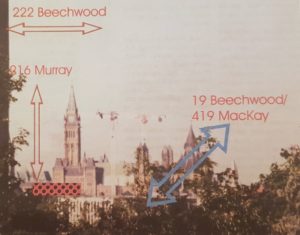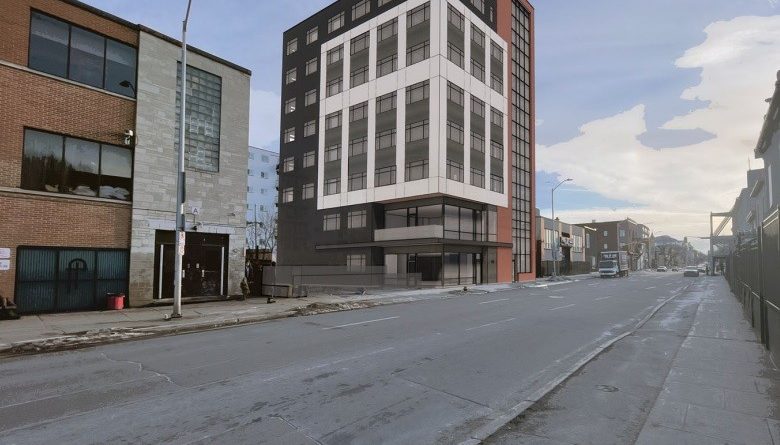The Shepherds of Good Hope are (likely) building again
Larry Newman
“The City of Ottawa has received Zoning Bylaw Amendment and Site Plan Control applications (#D07-12-21-0040) to permit the development of an eight-storey mixed-use building with 48 dwelling units on floors three to eight, and a community health and resource centre that includes a drop-in centre which will operate 16 hours/day and a commercial kitchen at grade and on the second floor.” This announcement appears on the City of Ottawa Development Applications site.
This building will be constructed in place of what is now a one-storey commercial building at 216 Murray St. The apartments are typically about 350 sq. ft. (32.5 sq metres) and include a bathroom and kitchenette. The new tenants will be provided with medical and social support 24/7.
So, who pays for this new building and its furnishings? As explained on the Canada Mortgage and Housing Corporation web site, “The Government of Canada, through CMHC, launched the Rapid Housing Initiative (RHI) in October 2020. The initial funding for this initiative was $1 billion to help address urgent housing needs of vulnerable Canadians, especially in the context of COVID-19, through the rapid construction of affordable housing.” The Shepherds of Good Hope (SGH) acted quickly and acquired $10.3 million for the construction of 216 Murray St.
This new building is not in Sandy Hill but it’s just a few blocks away and it will affect people who we now see on streets in our neighbourhood. As part of the agreement between the SGH and the City, the number of beds at SGH’s existing shelter will be reduced as people are moved into the supportive housing next door.
How does one qualify for these special housing units? Criteria are provided by Ottawa City Health and Inner City Health. They include a priority for women as well as Indigenous people. People with special needs (physical, emotional, behavioural, or learning disability or impairment) are also a priority. The people who are most in need are the most likely to qualify for one of these special housing units.
After the 216 Murray St. building is constructed (and another on Merivale), there will be a total of six buildings in Ottawa accommodating more than 337 people who would otherwise be homeless. Four of the six are distributed rather generously throughout Ottawa: Kanata, Nepean, and Gloucester.
As many of us know, drug addiction has increased substantially during Covid-19 and we’re seeing more drug users and their paraphernalia on our streets. An increase in housing for those who cannot afford it and who now spend most of their day on the street is welcome news.
However, there is another aspect to this story that is not welcome: how easy it is for developers to get zoning concessions from the City. The zoning changes obtained for this building are typical for this city. For example, building height increased from the originally required 21.4 metres to 33.3 metres, and the requirement for a minimum front yard distance (from the property line to the building) has been eliminated: it was originally 3 metres and is now 0 metres. The proposed design will utilize the entire footprint for residential units in order to increase cost effectiveness. The proposed design increases the number of permanent housing units for individuals currently experiencing homelessness from 28 to 48. Once more this was justified by the need “to increase cost effectiveness.”

News flash!!! Stop the keyboards!!
On May 31, 2021, the Shepherds of Good Hope (SGH) submitted an application to the City to construct an eight-storey building at 216 Murray St. In a new development, the Lowertown Echo de la Basseville’s September-October issue reports that a group calling itself the Citizen Coalition for Compassionate and Safe Communities (CCCSC) has appealed this application to the Ontario Land Tribunal.

Members of the CCCSC have more than one motive to object to its construction. Some worry about an increase in the number of people on the street who are recipient of services by the SGH. This is a security issue for them. Others worry about the safety of Indigenous women who would have to live in the vicinity of a large shelter and a busy safe injection site: A technical argument relates to a line of sight from the Beechwood National Cemetery to Parliament apparently protected by a 2008 bylaw (see drawing at left). It will be argued that this increase in building height interferes with that line of sight.
The CCCSC has started a GoFundMe campaign to pay for the cost of appeal.
